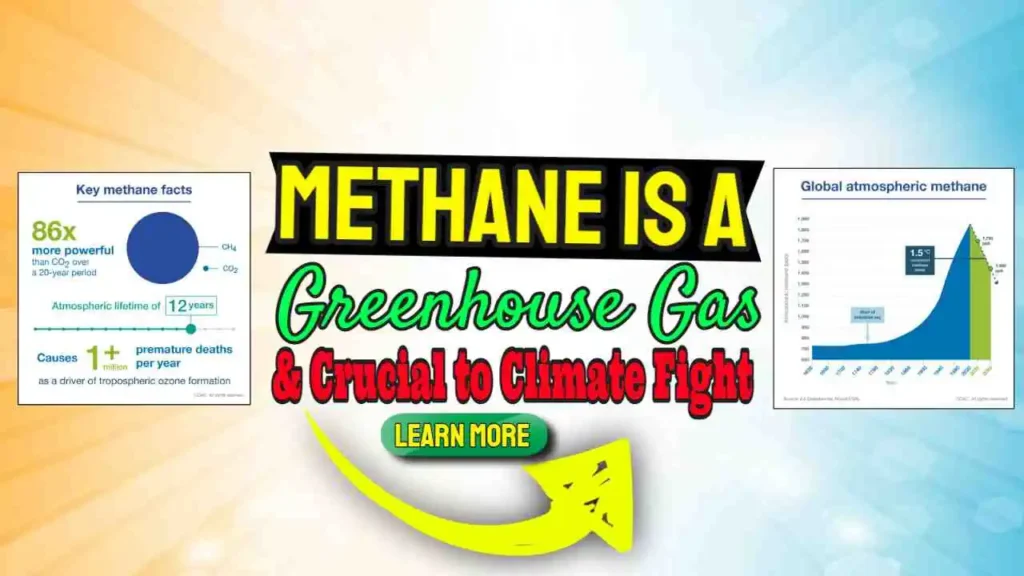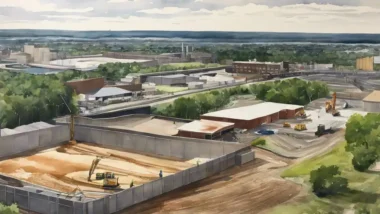What Are the Crucial Dangers of Methane Gas?
As the amount of methane in the atmosphere increases, so does the temperature increase. This is driving global temperatures to climb, and we are approaching the point of no return. In a June 2016 briefing to the White House Office of Science and Technology Policy, Cornell professor Robert Howarth addressed the risks and solutions to this problem.
In 2015, the COP21 (also known as the United Nations Climate Change Conference) was held in Paris. The international community agreed that the earth’s temperature should be kept below two degrees Celsius. This is in contrast to the Earth’s baseline temperature before to the industrial age. It was determined that a temperature increase of 1.5 degrees Celsius or higher will cause major problems all around the world.
Methane gas detectors are essential for workers who spend a substantial amount of time working in tight spaces. On a daily basis, methane gas poses a slew of hazards. If allowed to accumulate, methane can cause catastrophic events such as fires or explosions.
Despite this, using a variety of methane gas detecting systems has made employees safer than ever before.
Even though I know I’ve been a poor climate communicator, I’ve always considered that one of my most visible failings has been in communicating the dangers of methane. It is the most dangerous greenhouse gas, even more so than carbon dioxide.
Despite decades of efforts to highlight the hazards of methane, we have continued to use “carbon” as our primary shorthand for climate pollution, but it is not that simple. Methane does not include the element carbon. As a result, people may forget it during any discussion on carbon decarbonization.
The main component of natural gas, methane, is known as fugitive methane gas and poses a number of problems, the most of which are caused by leaks in the oil and gas supply companies.

The following are the health and safety risks to both of these:
Explosions, flames, and asphyxiation due to a lack of oxygen are all possibilities.
There are serious dangers in this situation. However, some of them are most likely not. We know that one of the scare tactics used by environmental groups against the gas drilling sector is losing traction. According to a recent study published in the Proceedings of the National Academy of Sciences, methane gas does not appear to be a major contaminant created by gas drilling and fracking.
If you suspect a gas leak on your property or smell gas in your home, contact a local plumber to determine the true source of the problem. These problems are frequently related to plumbing. As a result, plumbing professionals should be in charge of residential plumbing.
When mixed with other chemicals, 5% quantities of methane can become volatile. Sewer methane emissions are typical of sewer-related utility company work. If you notice a horrible “rotten egg” smell in the region, methane levels can be explosive. When methane is ignited in big quantities, it can cause massive explosions.
individuals who argue against methane reduction must accept that it is a very explosive, powerful greenhouse gas that is hazardous to individuals who live near unmanaged landfills.
It’s worth mentioning, however, that the scent many people associate with methane is not, in fact, methane. Landfill gas, which is described as gas produced by the breakdown of rubbish, typically smells due to VOCs (volatile organic carbon compounds) in it, such as mercaptans. Many people believe they smell methane when they actually smell other substances mixed in with the methane gas.
Landfills sometimes stink of hydrogen sulphide, a particularly dangerous gas, and this is generally owing to the presence of plasterboard in the waste. Health and safety experts are continually informing workers about the dangers of hydrogen sulphide and how to protect themselves.
Importance of Avoiding Natural Gas Leaks
Natural gas, as geological (fossil-derived non-renewable) methane, is known, is a greenhouse gas. Whereas biomethane is a renewable energy source made from waste organic material (biowaste).
Natural gas is delivered to millions of homes throughout the world via vast gas pipeline networks. Although, in theory, it may be the least damaging to the environment of all fossil-based energy sources. Nonetheless, natural gas leaks must be avoided. This is due to the enormous potential for them to cause global warming if they escape. It is referred to as “fugitive gas” in the gas supply industry, and it is the proverbial elephant in the room that must be properly tamed.
California has implemented fugitive methane emission limitations as one illustration of this knowledge. California’s methane emission limitations are stricter than the Obama administration norm, which Congress is attempting to reinstate.
As a result of being stored under pressure, natural gas leaks into the atmosphere:
When a gas line is damaged or ruptured, or when gas and oil companies allow unburned gas from oil wells and refineries to escape without flaring it off. With correct supervision, a specially built gas flare prevents its discharge into the atmosphere.
Natural gas emissions in California are limited due to environmental constraints. According to the California Air Resources Board, the state’s primary air quality and climate regulator, cattle produce more than half of the state’s methane emissions, rather than the oil and gas industry.
Methane emissions from man-made sources are manageable. Nonetheless, if methane emissions are not reduced fast, there may be increased worries about direct methane releases in the geosphere.
Researchers have identified a massive amount of methane being released from permafrost and other frozen locations. Because of their peat composition, these bogs have converted into permafrost. Permafrost is warming and decomposing anaerobically, releasing large amounts of methane into the atmosphere. Methane is leaking from land, marine, and lake permafrost, and the impact is impossible to predict.
As the third-largest oil producer in the United States, New Mexico is setting an example for other producers in the country by taking steps to limit methane emissions. California, as one of the world’s largest methane emitters, is creating a precedent that other states will hopefully follow. This is especially likely given the Biden administration’s pledge to tighten national rules even further.
Nonetheless, humans today emit more methane than natural sources.

Methane Greenhouse Gas Emitted from Landfills
Landfills generate methane biogas. It should come as no surprise to those of you who were concerned about the unpleasant stench of your waste bin after raising the lid.
You might be surprised to learn that landfill gas (LFG), a major contributor to climate change, is primarily methane. In addition to natural gas networks and leaks, landfills are among the main sources of methane gas because of animal digestion and manure management.
Rick Duke, senior counsellor to the United States Special Presidential Envoy on Climate Change, told the Huffington Post:
“Methane, which is the world’s single most important climate pollutant and contributes approximately one-fifth of the globe’s greenhouse gas emissions, must be handled immediately now that the Montreal Protocol has decided to curb hydrofluorocarbons.”
Following the United States’ promise to reduce methane emissions both domestically and internationally, the burden now falls to the American people. This is accomplished through research and development, the implementation of rules to limit methane emissions into the atmosphere from landfills and fossil fuels, and the provision of incentives to address agricultural methane.
How to Detect Methane Gas
Pellistor sensors are used in both fixed and portable gas detectors, they are commonly used to detect and monitor methane. Pelistors are used to detect combustible gases in addition to tracking methane. This method is based on gas molecules reacting with the catalyst on ceramic pellets. The sensor detects gas by igniting the air surrounding it, causing the resistance of the sensor’s detecting element to change. The amount of gas in the air affects the rate of this reaction.
What about detecting larger environmental leaks, such as those in the air?
High-tech laser enterprise photonics is the way to go for locating methane leaks and non-point-source methane discharges.
Using gas mapping lidar technology, gas distribution pipes may be scanned for methane emissions. These companies use helicopters furnished with lidar sensors to survey the region of a gas distribution network in order to find methane emissions. Following each daily scan, a computerised map including images of the gas plume is developed. This device has GPS coordinates and can calculate methane emissions.
It is now able to regulate and detect leaks in grid distribution pipelines, which is critical for all gas distribution enterprises globally. Everyone in the global community must employ the most advanced techniques for detecting and repairing natural gas leaks.
Anaerobic Digestion Reduces Emissions of GHG
So far, we have only explored one feasible solution, which is enhanced natural gas distribution system leakage detection.
Pipes put inside the dump are used in newer ways for capturing landfill gas. To offset the use of fossil fuels, people should incinerate biogas derived from organic waste or use it to generate power. You can sell landfill gas for a profit once you’ve paid for the collection infrastructure. If a landfill produces enough biogas, it may be able to power thousands of homes.
Our team will now discuss the relevance of anaerobic digestion as a method of reducing methane emissions, a process that is as old as nature itself. This concept is for a massive mechanical stomach that would consume all types of organic waste, such as sewage sludge, chicken litter, and food crop leftovers. A significant portion of the mass is converted into biogas, which is then cleaned and used as a fertiliser, livestock bedding, and even as a compacted block construction material.
Anaerobic digestion, when performed properly, helps to avoid the emission of methane, which is already a possibility under current farming practises. While lowering methane emissions is important, using methane to power transportation vehicles can help conserve natural gas and diesel that would otherwise be wasted.
Anaerobic digestion has several advantages over standard agricultural practices including the following:
- Reduces local community water contamination
- Pasteurisation aids in making the output sanitary and reducing the spread of illness and infection
- Creates a fertiliser that reduces the demand for synthetic fertilisers
- Farm waste and agricultural air pollution are often reduced.
By counteracting the impacts of excessive synthetic fertilizer use, the stringy substance can help revitalise tired soil.
It accomplishes this by ensuring:
- better, more disease-resistant crops that demand less watering
- Aids local businesses by creating jobs and assisting agricultural industries in diversifying and retaining the younger generation on the family farm, which in turn
- aids in the management of farms and spin-off operations, adding value to spin-off commodities.
What matters most, however, is that California state officials have established that the use of anaerobic digestion systems (which reduce methane emissions) by big American dairy farms is both the cheapest and most efficient technique.
If plant operators can sell renewable energy credits rather than reduce emissions at the source, the money earned will benefit both the plant operators and the industry as a whole.
Why Methane is a Crucial Player in the Fight Against Climate Change
As governments prepare for COP 26 in Glasgow, Scotland, next month, the global pressure to decrease agricultural emissions is mounting. The guidance group emphasised the 10 to 30-year time frame in which a significant reduction in methane emissions will have a greater impact than a reduction in carbon dioxide emissions.
In a previous portion of this article, we explored how methane has a relatively short half-life in the atmosphere. This suggests that methane has a significant but brief greenhouse gas impact.
Looking at carbon reduction in terms of global warming potential (GWP), the future will necessitate a focus on lowering emissions (GWP). The global warming potential (GWP) of a gas is equal to the total amount of global warming that that gas contributes to, in comparison to a fixed amount of carbon dioxide.
Reducing the potential for global warming will require a focus on lowering the potential for global warming. The most effective solution to this issue is to focus on agricultural emissions reductions and biofuel generation using proven and ready-to-implement technology.
There is no indication that resources should be diverted from CO2 emissions to methane releases, as both are required. However, it should be mentioned that increased efforts should be made in the future to research and execute the utilisation of methane through processes such as anaerobic digestion. It would provide short-term benefits as compared to the same degree of CO2 reduction.

Methane is a Greenhouse Gas and Its Reduction is a Priority – Conclusion
Methane is produced as living things decompose and is provided to millions of houses via gas distribution systems. Methane, unlike carbon dioxide, has a limited atmospheric lifetime yet is more powerful than CO2 in aggregate.
Climate assessment by the IPCC. Claims that methane (chemical formula CH4), a gas 28 times more powerful than carbon dioxide in its ability to raise the Earth’s temperature, is responsible for 30 to 50% of the current global warming.
Natural gas fugitive leakage must be greatly reduced. Because of available technologies, they can be discovered and the leaks can be repaired. It is in the best interests of global governments to follow the lead of the Californian legislature, which recently passed legislation requiring gas distribution companies to follow best practises for reducing methane leakage.
Instead of leaking into the atmosphere, LFG can be captured, processed, and used as a renewable energy source. The usage of LFG minimises the hazard of global climate change by preventing methane from entering the atmosphere and worsening local pollution. Furthermore, LFG energy efforts produce cash and create jobs both inside and outside of the community.
The World Meteorological Organisation reports that the amount of heat-trapping greenhouse gases in the atmosphere has reached a new record high this year.
Long-term climate patterns like these suggest that the present generation will confront greater global warming issues, such as increasing frequency of severe weather and sea-level rise, as well as a reduction in water resources and consequences on land and marine ecosystems.
Governments must take care to prioritise existing market-ready anaerobic digestion technology. By maximising its utilization, the lowest cost and greatest reduction in greenhouse gas warming can be achieved.
While carbon dioxide decarbonization should be encouraged, it is not a quick remedy and should be performed as soon as possible to minimise future global temperature increases.
Reducing methane emissions in our environment is a key step towards avoiding the worst effects of global warming, and anaerobic digestion is an excellent method for doing so.
The post Methane is a Greenhouse Gas & Crucial Player in Climate Fight








Your website is a feast for the mind, and I admire your dedication to greatness. Your future projects should go as well as the information you give.